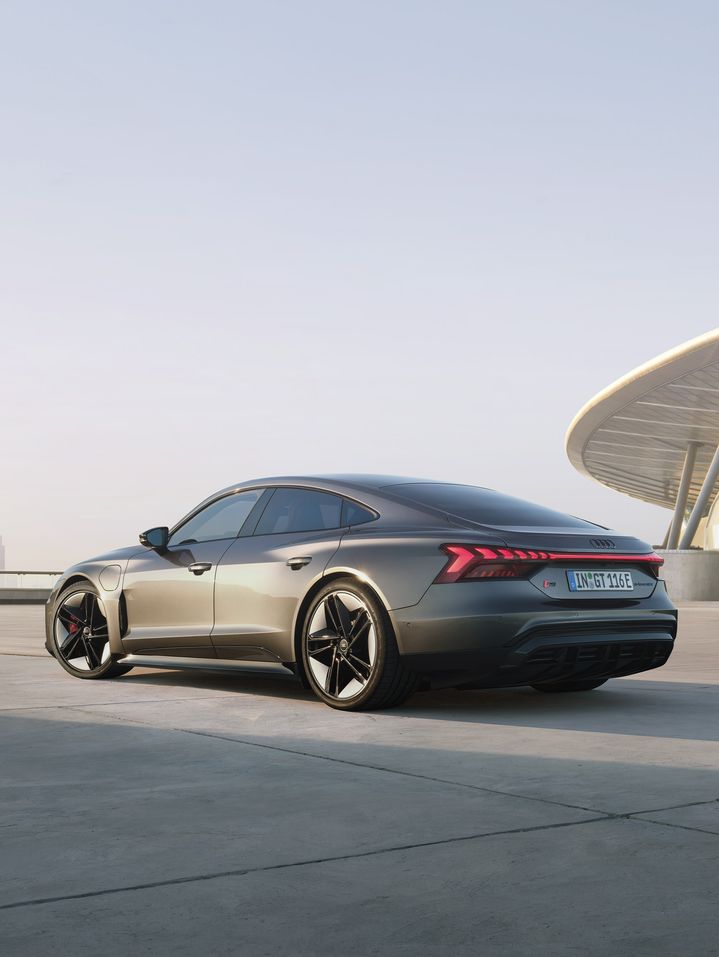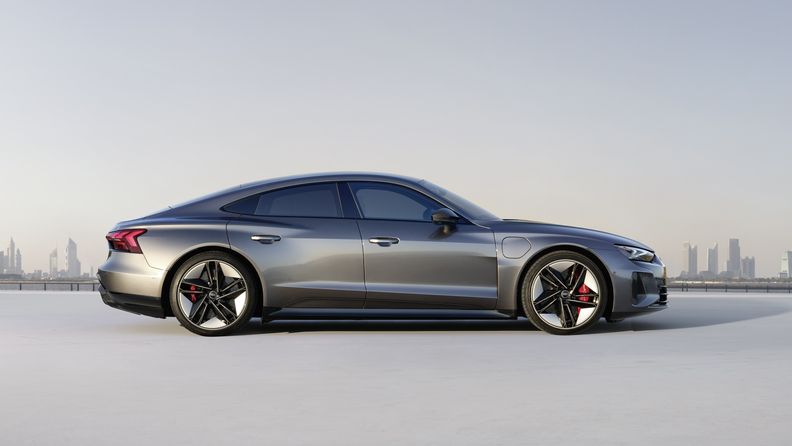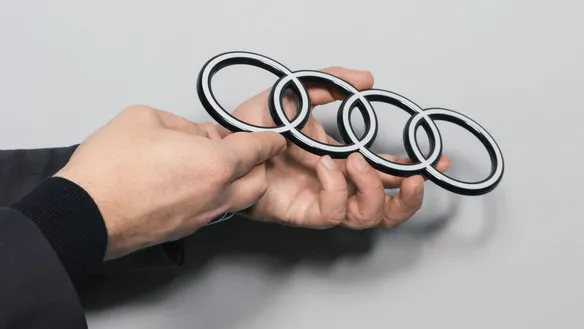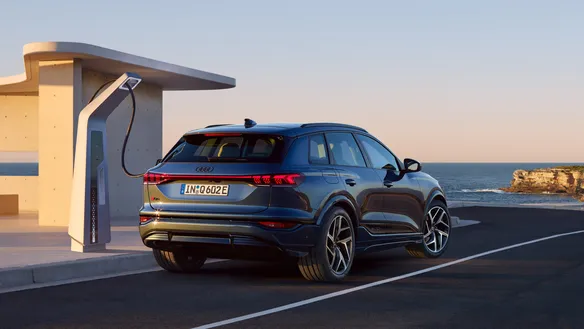“We stay true to ourselves by always venturing down new paths.”
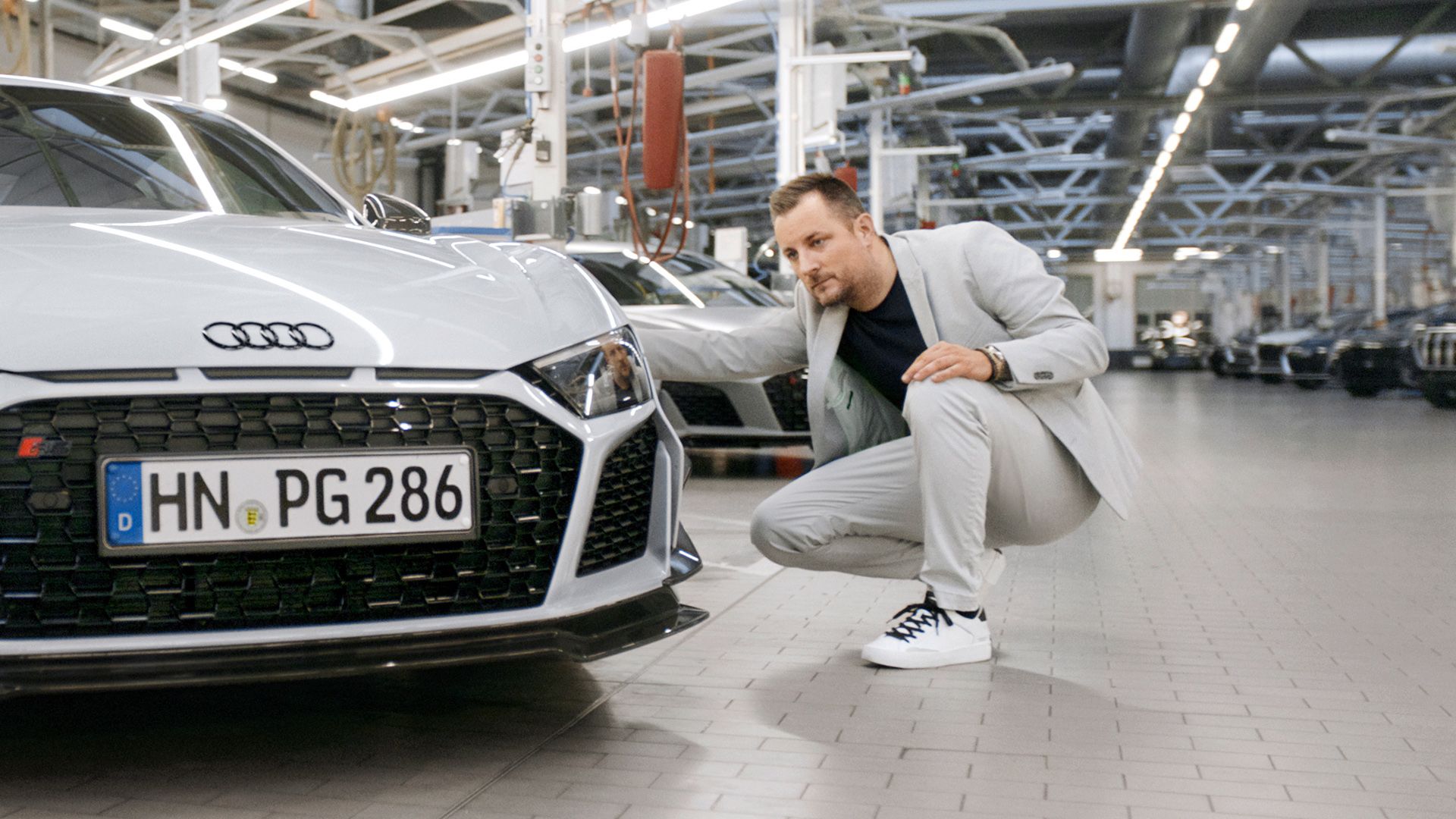
Mr. Grams, the final editions of the Audi R8¹,² and Audi TT RS³,⁴ signal the end of an era. Considering that the portfolio of the Audi Sport GmbH is undergoing a sea change, isn’t it a challenging time to be heading up the brand?
For me, it’s nothing short of the most thrilling job at the most thrilling moment of all time. When you think about how the Audi R8¹,² super sports car and the magnificent Audi TT RS³,⁴ sports coupé with its iconic design have shaped the Audi brand and Audi Sport GmbH, it’s only natural to feel a twinge of regret that these will be the last of their kind³,⁴. At the same time, I can’t imagine a more fitting final chapter to these emotionally charged cars and their success story. I am unbelievably proud of what we have achieved. Now, we are coupling the wealth of experience gained in developing these vehicles with our unwavering drive to look beyond the horizon in order to take our portfolio to the next level.
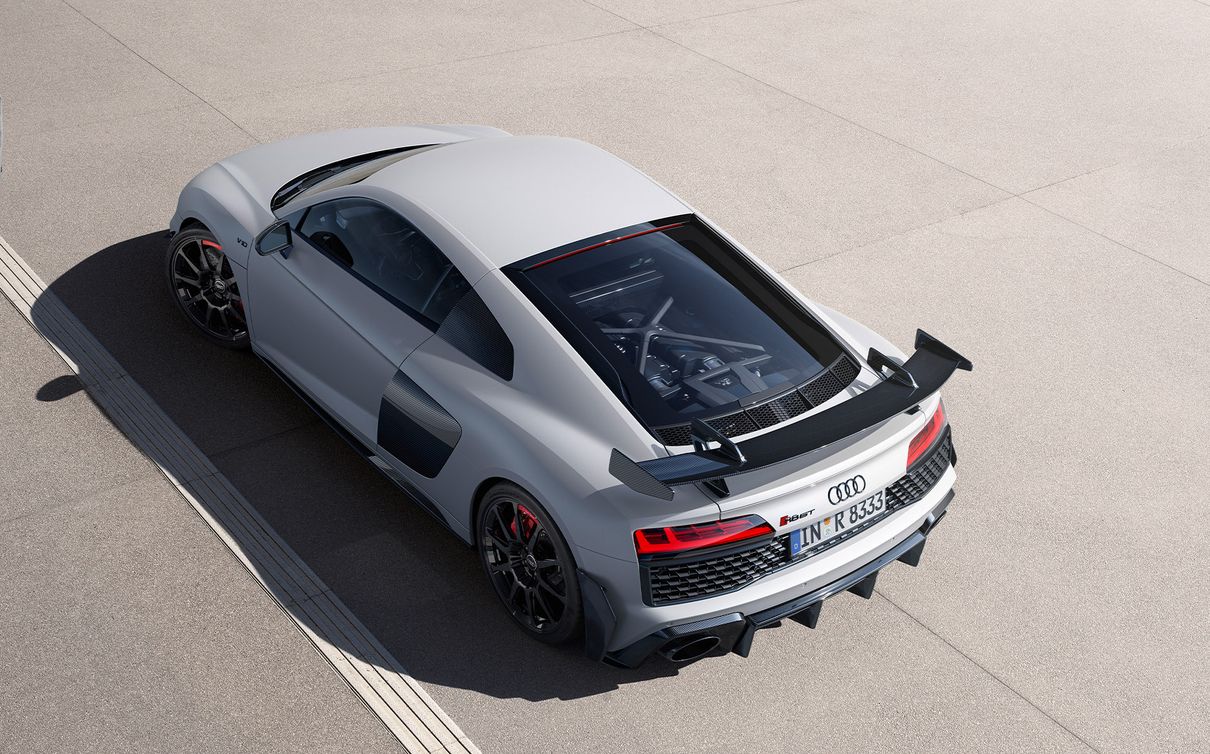
What will it take to make that a reality?
More than ever, the emphasis in the future will be on creating the perfect high-performance machine by fusing hardware and software as well as analogue and digital experiences. I was involved in developing the first-generation Audi R8 engine, before making the transition to electric powertrains. And in my prior role, I set up a software unit within the Group. My entire team at Audi Sport GmbH and I personally will tap into our experience and know-how to write even more illustrious and exciting chapters in the brand’s history.
How is the Audi Sport GmbH positioning itself for what is an increasingly electrified future?
We continue to see ourselves as bold, innovative and progressive. In that vein, we are systematically pursuing both electrification and digitalisation as highly promising technological avenues. The Audi brand already boasts a powerful drive system. When combined with intelligent software, this has the potential to unlock additional performance features and boost the fun factor in our vehicles. For us, it’s clear that a cogent, systematic electrification strategy will underpin the future viability of our business.
How important is digitalisation?
Connecting vehicles and drivers to the digital world is already a top priority today. Going forward, we will incorporate functions, such as enhanced digital support for racetrack experiences, that are unique to the Audi RS models. What’s more, when drivers are busy on their mobiles during the charging process, for instance, we will offer hallmark Audi RS experiences. Those are the topics we’re focusing on intensively at the moment. If we look ahead to a time when automated driving is a reality: That will unquestionably prove to be a game changer for our industry and also play a key role in high-performance motoring. As you can see, there are a whole lot of things brewing.

What will set Audi Sport models apart in the future?
Our aim is to create a sustainable, progressive and digital high-performance mobility segment. As we know from our research, our progressive target group will continue to value design first and foremost, clearly followed by performance. In other words, all-electric Audi Sport models must also translate performance into a compelling ride. To put it simply, a powerful vehicle that lacks the agility to corner dynamically will fall short of the mark not only today but also in tomorrow’s world. We are pursuing a clearly defined goal – to create best-in-class products. With that in mind, we continually push the envelope so that we can develop great ideas and innovations to surprise our customers time and again.
What is Audi Sport’s attitude to sustainability?
We closely analyse market trends and regard sustainability as a key driver. At the same time, we firmly believe it is our responsibility to take a 360-approach to the topic – starting with the development of electric drives. From as early as 2025, we aim to ensure that over three out of four of our high-performance models sold are partially or fully electrified. By the end of the decade, our high-performance range will consist exclusively of all-electric vehicles and high-performance plug-in hybrids. And it doesn’t end there. To live up to our promise of progressive performance, we must also ensure that our production processes are carbon neutral⁵, as is already the case for the Audi RS e-tron GT⁶, with the rest of the Audi plants successively following suit by 2025. The same applies equally to our equipment offerings. On this front, we already offer our customers options such as leather-free fabrics made partly with recycled materials and sporty wheel rims produced using techniques that cut greenhouse emissions. And we intend to systematically expand this range.

“Our aim is to create a sustainable, progressive and digital high-performance mobility segment.”
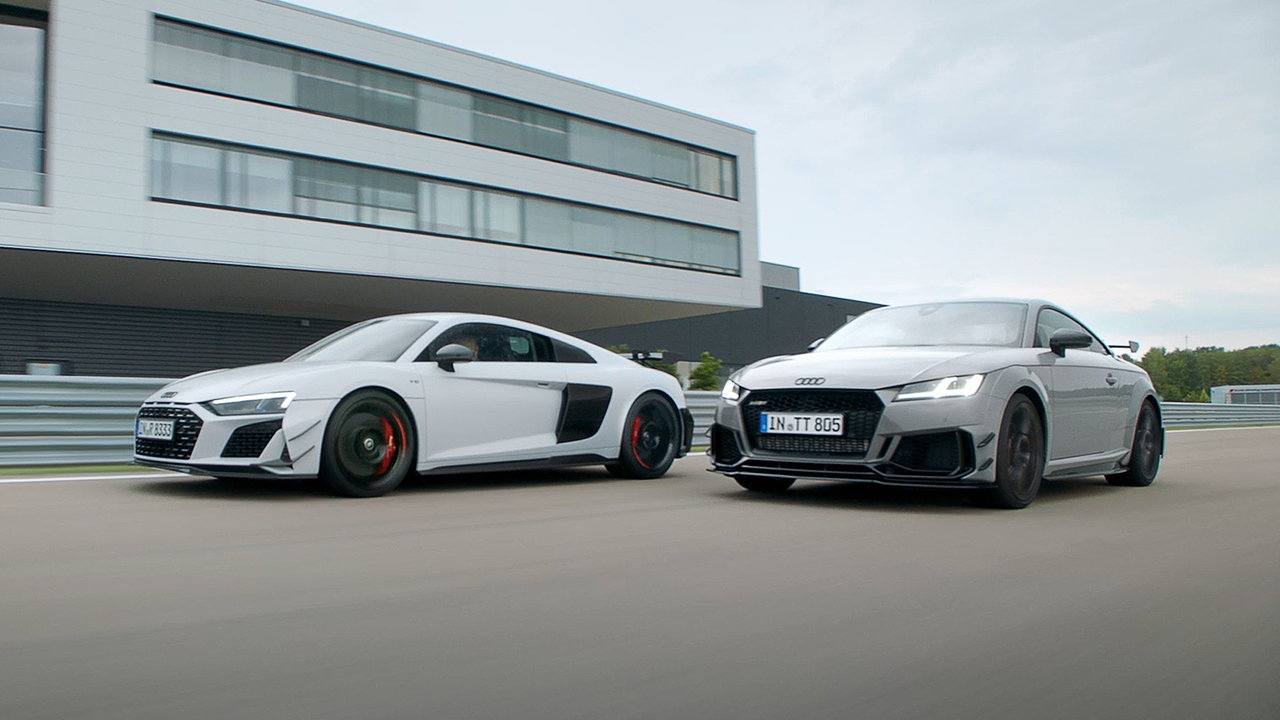
And what about a high-performance engine’s trademark growl? How will that carry over into the all-electric era?
Acoustics will continue to play a very important role going forward. That’s why we’re placing special emphasis on sound engineering so that our vehicles not only look different from the basic models but also produce a distinctive note.
How do you ensure that you stay true to the Audi Sport DNA despite the transition to electric drives and digital systems?
As the saying goes, change is the only constant in life. That means nothing ever stays the same. So I prefer to look at where we’ve come from and where we stand today. Not only is our current, 19-strong portfolio of Audi Sport models bigger than ever before, but we also achieved record sales in 2021 despite the pandemic and were the only manufacturer to compete in the Dakar Rally with a partially electrified⁷ vehicle. When we first opened our doors, we had only a handful of employees. In the 1980s, we sold accessories and sports gear before expanding into exclusive, customised equipment the decade after that. Then came the Audi S6 Plus – the first of our very own vehicles. Since then, we’ve written chapter after chapter of an incredible success story. Today, the Audi Sport family has more than 1,500 employees, and the team that crafts the Audi R8 largely by hand now also produces the Four Rings’ electric flagship – the Audi RS e-tron GT⁶. All this is only possible because we have never stopped evolving. We have stayed true to ourselves by venturing new paths time and again and refusing to compromise on what sets us apart. And that’s exactly what we will continue to do to carry the Audi Sport GmbH legacy into the future.
¹Audi R8 GT: Audi R8 GT: Fuel consumption (combined*) in l/100 km: 15.0–14.9; CO₂ emissions (combined*) in g/km: 341–339. Information on fuel/power consumption and CO₂ emissions with ranges depending on the selected equipment of the vehicle. Only consumption and emission values according to WLTP and not according to NEDC are available for the vehicle.
²Audi R8 GT: This special model is limited worldwide to 333 units. Please contact your Audi partner if you are interested. Fuel consumption (combined*) in l/100 km: 15.0–14.9; CO₂ emissions (combined*) in g/km: 341–339. Information on fuel/power consumption and CO₂ emissions with ranges depending on the selected equipment of the vehicle. Only consumption and emission values according to WLTP and not according to NEDC are available for the vehicle.
³Audi TT RS Coupé iconic edition: Fuel consumption (combined*) in l/100 km: 9.1; CO₂ emissions (combined*) in g/km: 207. Information on fuel/power consumption and CO₂ emissions with ranges depending on the selected equipment of the vehicle. Only consumption and emission values according to WLTP and not according to NEDC are available for the vehicle.
⁴Audi TT RS Coupé iconic edition: This special model is limited worldwide to 100 units. Please contact your Audi partner if you are interested. Fuel consumption (combined*) in l/100 km: 9.1; CO₂ emissions (combined*) in g/km: 207. Information on fuel/power consumption and CO₂ emissions with ranges depending on the selected equipment of the vehicle. Only consumption and emission values according to WLTP and not according to NEDC are available for the vehicle.
⁵Audi defines net carbon neutrality as a status where, despite having exploited other possible reduction measures in relation to CO₂ emissions caused by our products or activities, remaining and/or currently unavoidable CO₂ emissions in connection with the supply chain, manufacturing or recycling of our vehicles are, at least in terms of quantity, offset by voluntary compensation projects worldwide. CO₂ emissions generated during the operational phase of a vehicle (i.e. as of the time the vehicle is handed over to the customer) are not taken into account.
⁶Audi RS e-tron GT: Combined power consumption¹ in kWh/100 km: 20.2–19.3 (NEDC); 22.6–20.6 (WLTP); Combined CO₂ emissions¹ in g/km: 0. Electrical consumption and CO₂ emission figures given in ranges depend on the equipment selected for the vehicle.
⁷The Audi RS Q e-tron combines an electric drivetrain with an energy converter system based on the TFSI engine and a generator.
¹Audi R8 GT: Audi R8 GT: Fuel consumption (combined*) in l/100 km: 15.0–14.9; CO₂ emissions (combined*) in g/km: 341–339. Information on fuel/power consumption and CO₂ emissions with ranges depending on the selected equipment of the vehicle. Only consumption and emission values according to WLTP and not according to NEDC are available for the vehicle.
²Audi R8 GT: This special model is limited worldwide to 333 units. Please contact your Audi partner if you are interested. Fuel consumption (combined*) in l/100 km: 15.0–14.9; CO₂ emissions (combined*) in g/km: 341–339. Information on fuel/power consumption and CO₂ emissions with ranges depending on the selected equipment of the vehicle. Only consumption and emission values according to WLTP and not according to NEDC are available for the vehicle.
³Audi TT RS Coupé iconic edition: Fuel consumption (combined*) in l/100 km: 9.1; CO₂ emissions (combined*) in g/km: 207. Information on fuel/power consumption and CO₂ emissions with ranges depending on the selected equipment of the vehicle. Only consumption and emission values according to WLTP and not according to NEDC are available for the vehicle.
⁴Audi TT RS Coupé iconic edition: This special model is limited worldwide to 100 units. Please contact your Audi partner if you are interested. Fuel consumption (combined*) in l/100 km: 9.1; CO₂ emissions (combined*) in g/km: 207. Information on fuel/power consumption and CO₂ emissions with ranges depending on the selected equipment of the vehicle. Only consumption and emission values according to WLTP and not according to NEDC are available for the vehicle.
⁵Audi defines net carbon neutrality as a status where, despite having exploited other possible reduction measures in relation to CO₂ emissions caused by our products or activities, remaining and/or currently unavoidable CO₂ emissions in connection with the supply chain, manufacturing or recycling of our vehicles are, at least in terms of quantity, offset by voluntary compensation projects worldwide. CO₂ emissions generated during the operational phase of a vehicle (i.e. as of the time the vehicle is handed over to the customer) are not taken into account.
⁶Audi RS e-tron GT: Combined power consumption¹ in kWh/100 km: 20.2–19.3 (NEDC); 22.6–20.6 (WLTP); Combined CO₂ emissions¹ in g/km: 0. Electrical consumption and CO₂ emission figures given in ranges depend on the equipment selected for the vehicle.
⁷The Audi RS Q e-tron combines an electric drivetrain with an energy converter system based on the TFSI engine and a generator.

